Border Collies with Blue Eyes [Rare!]
Border Collies are known for their intelligence, agility, and unique appearance. One fascinating aspect of their appearance is that some of these dogs have blue eyes. While it’s less common than brown eyes, you may be curious to learn why some Border Collies have blue eyes and if it’s related to their health or genetics.
Interestingly, the eye color in Border Collies can vary, with some dogs exhibiting one brown eye and one blue eye, or even partial blue eyes. This captivating trait can be traced back to their genetic makeup, with some studies suggesting a correlation between blue eyes and the dog’s pigmentation phenotypes. Exploring the genetics behind these captivating blue eyes reveals fascinating insights into the breed’s characteristics and health.
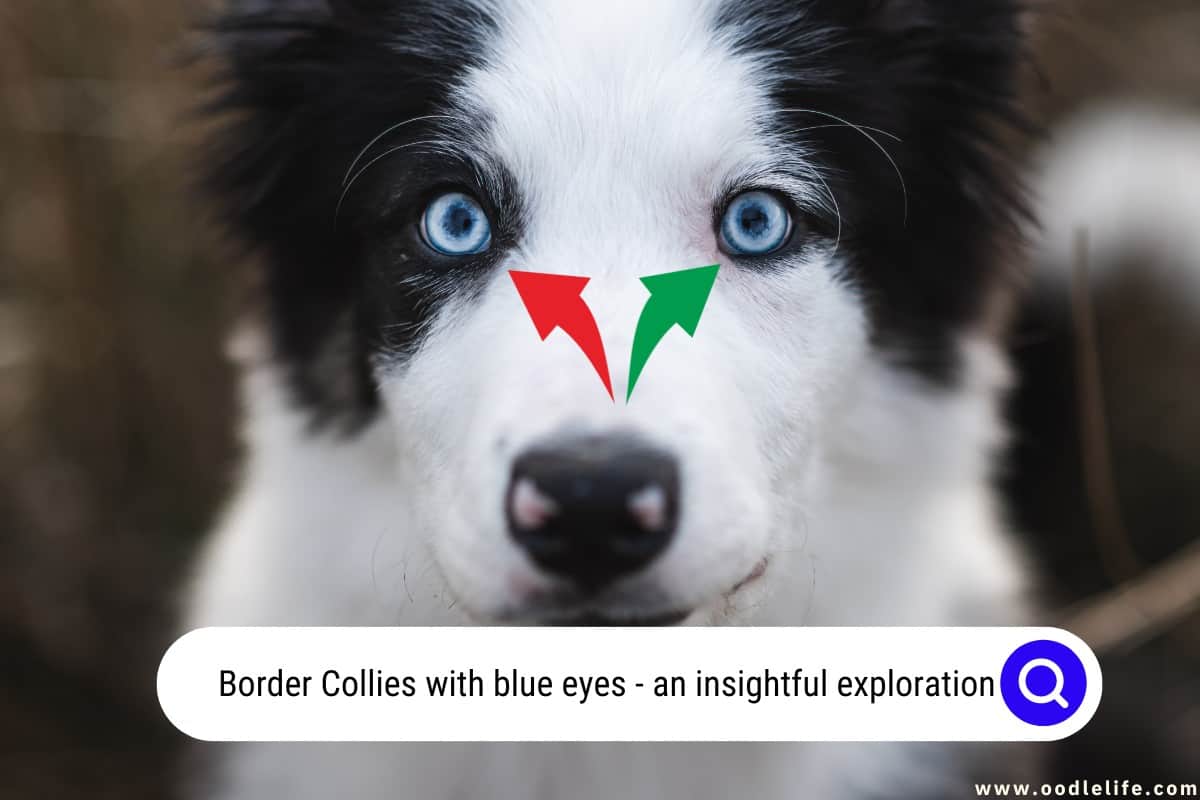
As dog lovers, we can’t help but be drawn to the unique appearance of blue-eyed Border Collies, and sharing stories about our canine companions with others allows us to bond over the quirks and talents of our favorite breeds. Delving into the world of these intelligent, blue-eyed dogs is an engaging way to celebrate the wonder and uniqueness of Border Collies.
Blue-Eyed Border Collies
Appearance and Features
Not all blue-eyed Border Collies are deaf, but there is a higher prevalence of deafness among them compared to those with other eye colors.
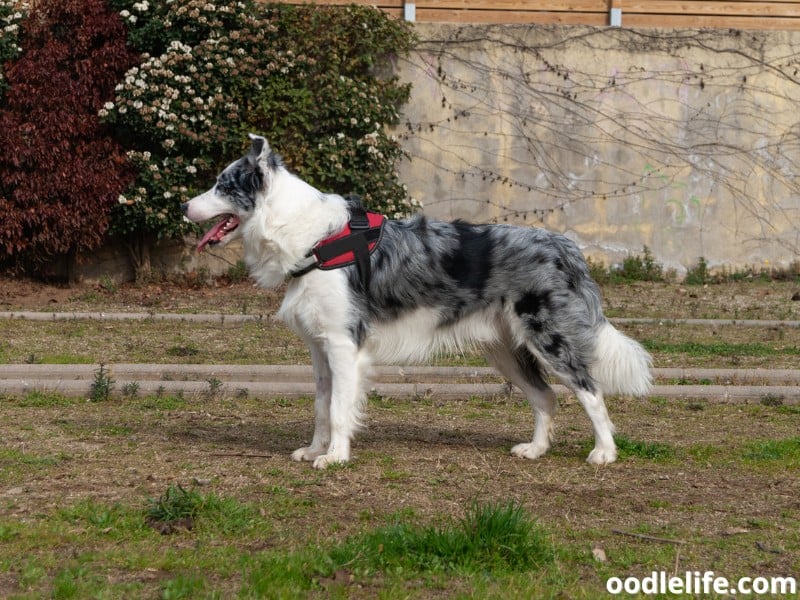
Blue-eyed Border Collies are a unique variation of the popular herding breed known for their striking appearance. Just like other Border Collies, they have a medium-sized body, athletic build, and their distinctive coat markings. What sets them apart is their captivating blue eyes that are rather rare in this breed.
These dogs are often born with dark blue eyes that may lighten over time, resulting in various shades of blue. In some cases, they may even present heterochromia – a unique trait where the dog has two different eye colors, one being blue and the other brown.
Melanin and Eye Color
The eye color in dogs, including Border Collies, is determined mainly by the amount of melanin present in their iris. Melanin is a pigment that affects not only eye color but also coat color and skin tones. Generally, more melanin results in darker eye colors like brown, while a lack of it leads to lighter hues like blue.
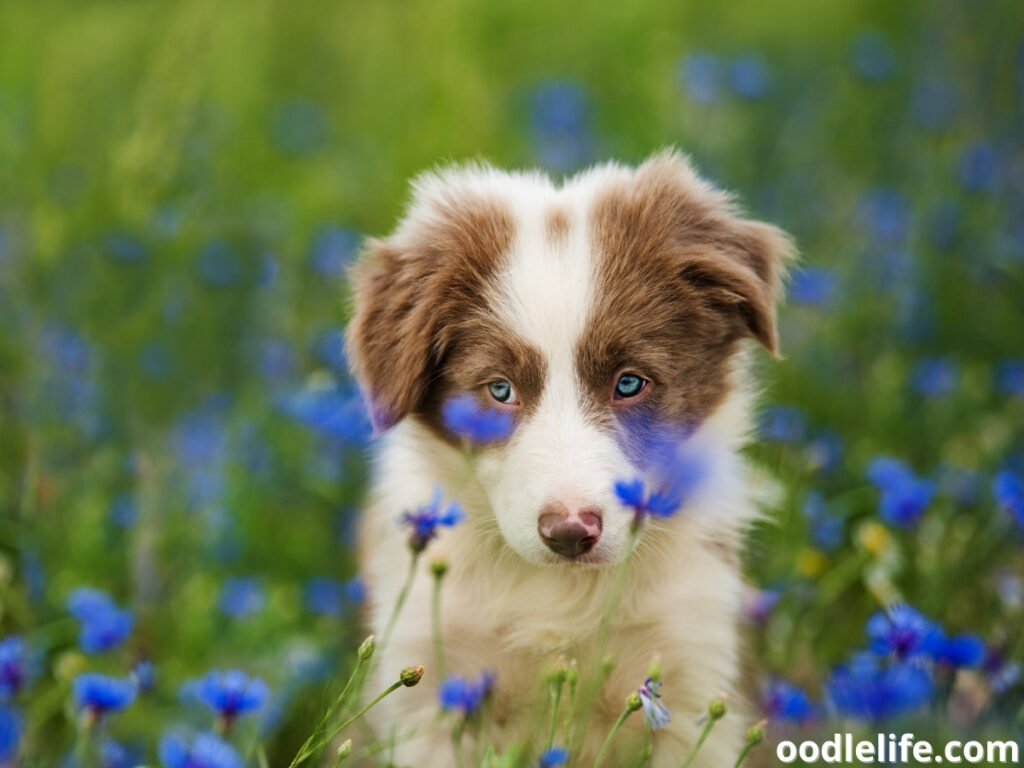
Blue eyes in Border Collies are often associated with a genetic factor that reduces the production of melanin in the iris, causing that mesmerizing blue color. Some breeders actively avoid breeding blue-eyed Border Collies, due to the increased risk of deafness in these dogs; however, not all blue-eyed individuals carry this risk.
Despite the beautiful and enchanting appearance of blue-eyed Border Collies, it is essential to remember that eye color should not be the defining factor when selecting a canine companion. Other traits, such as temperament and overall health, should be considered to ensure a harmonious bond between the dog and its owner.
Genetics and Eye Color
Border Collies can have captivating blue eyes due to their genetic makeup. In this section, we will take a closer look at the genes associated with their eye color and dive into different types of heterochromia in dogs.
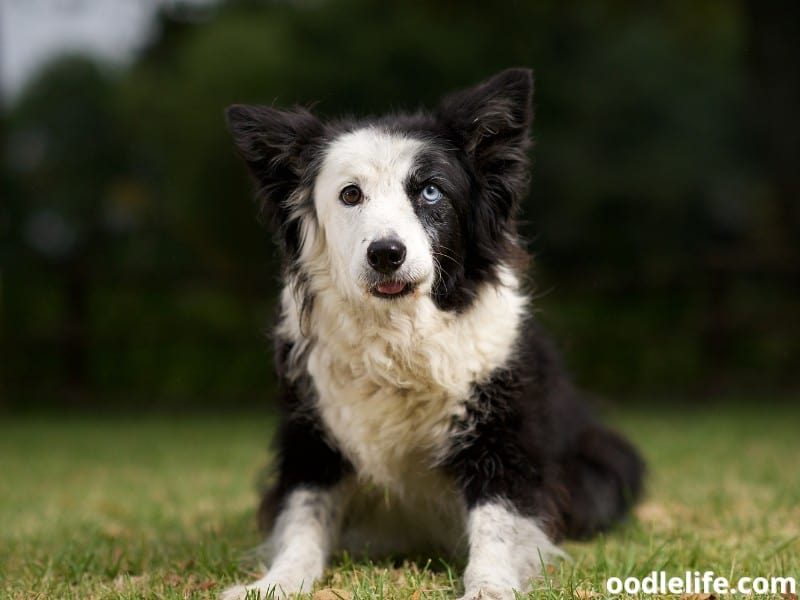
Heterochromia Types
Border Collies’ blue eyes often result from a phenomenon called heterochromia. There are a few types of heterochromia that you might observe in these dogs:
Complete heterochromia: In this case, one eye is entirely blue, while the other is a different color, usually brown.
Sectoral heterochromia: Only a portion of the eye is blue, while the rest of the iris is another color. It’s like a delightful pie chart in the dog’s eyes!
Central heterochromia: The dog’s eyes exhibit a ring of blue around the pupil, with another color surrounding it, creating a stunning “sunburst” effect.
Now, let’s explore the genes behind these mesmerizing blue eyes.
The merle gene is a dominant gene known to create unique coat patterns and sometimes blue eyes in dogs, affecting breeds like Border Collies and Australian Shepherds. However, studies have shown that Border Collies’ blue eyes can result from genes unrelated to the merle gene, and their eye color might be a recessive trait.
Hereditary heterochromia is also possible in Border Collies, with research indicating a significant genetic effect on congenital sensorineural deafness and pigmentation phenotypes.
So, what does this all mean? It’s safe to say that when it comes to Border Collies’ blue eyes, genetics is a fascinating playground where recessive traits and different types of heterochromia lead to some truly captivating gazes.
Merle Coats and Health Issues
Merle coats are a unique and eye-catching coat pattern in various dog breeds, including the Border Collie. These coats display a range of colors, often expressed as mottled or patchy combinations. However, these striking patterns may come with their share of health issues.

In this section, we’ll discuss the common health problems related to merle coats in Border Collies.
Common Merle Breed Health Problems
Deafness: One significant health issue associated with merle coats in Border Collies is deafness, which may be either unilateral or bilateral. Studies have found higher rates of deafness in dogs with blue eyes and merle coats, with Border Collies being no exception source.
Eye abnormalities: Merle coats, particularly in combination with blue eyes, have also been linked to eye abnormalities in Border Collies. Although these eye issues may not be as severe as deafness, they still warrant attention and care from owners and veterinarians.
Skin sensitivities: Additionally, some Border Collies with merle coats have increased skin sensitivities. These dogs may be more susceptible to skin irritations and sunburns, requiring extra care when spending time outdoors.
While these health issues are relatively common in merle-coated Border Collies, it’s essential to note that not all dogs with this coat pattern will experience these problems. However, it’s necessary to be aware of the potential risks associated with this distinct coat color.
In conclusion, it’s important to keep a watchful eye on the health and well-being of your merle-coated Border Collie. Consult with a veterinarian to address any health concerns and keep your canine companion looking and feeling their best!
Other Breeds with Blue Eyes
While Border Collies with blue eyes certainly catch attention, they are not the only breed known for this eye-catching feature. Several other dog breeds also display the beautiful blue eye color. Let’s take a look at some of these partial blue-eyed breeds.
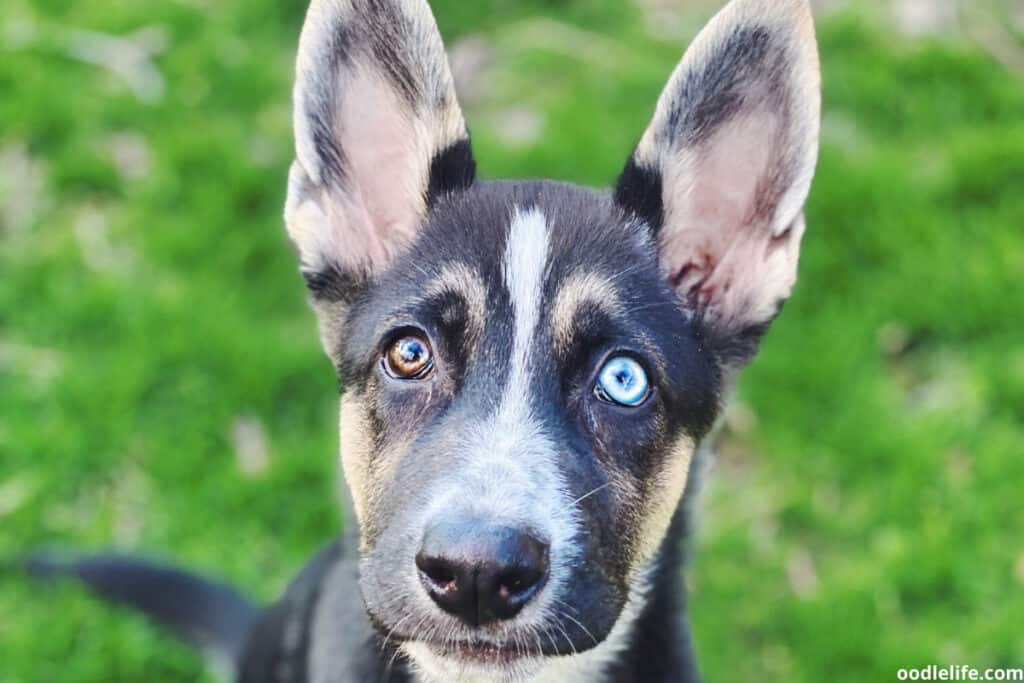
Partial Blue-Eyed Breeds
- Australian Shepherd: Known for their intelligence and agility, these medium-sized herding dogs often showcase striking blue eyes or even one blue and one brown eye. They’ve been popular with the American Kennel Club thanks to their good nature and working ability.
- Siberian Huskies: Famous for their sled-pulling abilities and thick fur coats, Siberian Huskies are known to have captivating blue eyes that can lend them an almost mystical aura. These energetic and friendly dogs are also recognized by the American Kennel Club for their distinctive appearance.
Dalmatian: You don’t need 101 of them to realize that Dalmatians can have mesmerizing blue eyes, which can be a striking contrast against their iconic black-and-white spotted coat. It’s not unusual to see Dalmatians with one or both blue eyes, making them truly stand out from the crowd.
Corgi: Both the Pembroke Welsh Corgi and Cardigan Welsh Corgi can have one or both blue eyes, giving these lovable, energetic dogs a truly unique appearance. The blue-eyed variants of this breed are relatively rare but have a devoted following of their own.
Great Dane: Known as “gentle giants”, Great Danes may possess blue eyes, especially those with harlequin or merle coat patterns. Blue-eyed Great Danes add an extra level of grace and charm to these already majestic dogs.
Weimaraner: These sleek, silver-coated hunting dogs can have blue or turquoise-blue eyes as puppies, and while their eyes usually turn more amber as they age, a trace of blue may still be present. The Weimaraner’s elegant look is well-regarded by canine enthusiasts.
Alaskan Malamute: Similar to their Siberian Husky cousins, Alaskan Malamutes may also display blue eyes that add an extra layer of enchantment to their wolf-like appearance. This cold-weather working breed can make a striking impression with their blue-eyed gaze.
Chihuahua: These tiny, feisty dogs can come in a variety of colors and patterns, and some Chihuahuas can have piercing blue eyes. These pint-sized pets definitely know how to make a big statement with their bold looks.
Dachshund: While it is uncommon in this breed, some Dachshunds may also possess blue eyes, giving these “wiener dogs” an even more distinctive appearance. Their blue-eyed variants are as charming and affectionate as their traditional brown-eyed counterparts.
Shih Tzu: On rare occasions, this small, toy breed may present with blue eyes. Just like their warm and gentle temperament, a blue-eyed Shih Tzu’s gaze is sure to melt your heart.
In conclusion, Border Collies are not alone when it comes to boasting unique blue eyes. Numerous other dog breeds, both large and small, may include blue-eyed specimens, making them an equally enchanting sight to behold.
Health Concerns with Blue Eyes
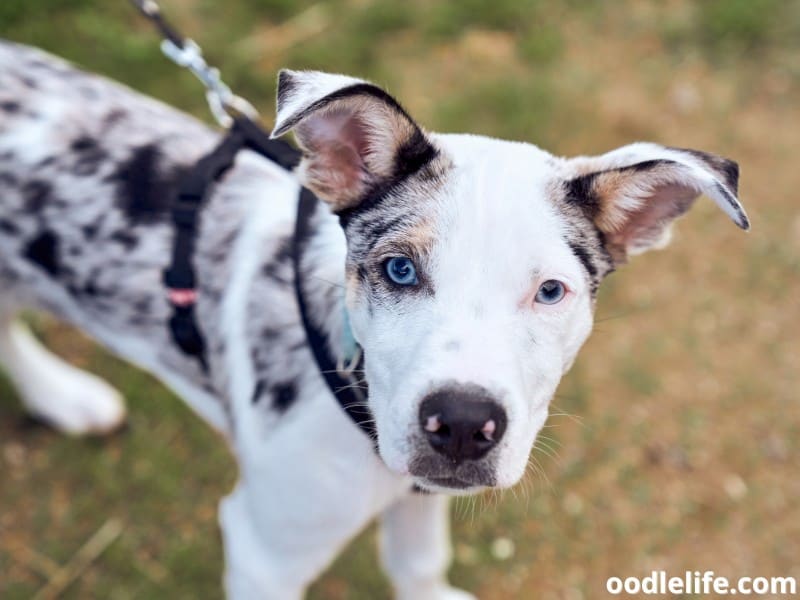
Vision and Hearing Issues
While blue-eyed Border Collies are charming and beautiful, they have an increased risk for certain health issues. Deafness is a significant concern in blue-eyed Border Collies, with a higher prevalence than in those with brown eyes. However, like all good dogs, Border Collies are experts in communication, so they may be able to adjust and use other senses to navigate their world.
Although not directly linked to blue eyes, other vision problems like cataracts and glaucoma can occur in Border Collies. These issues can lead to vision loss, making it essential to watch for any signs of discomfort or abnormal behavior in your blue-eyed pup.
Preventative Measures
To ensure your blue-eyed Border Collie has a healthy and happy life, take some preventative measures against potential health issues:
Regular Vet Checkups: Early detection of problems is critical, so make sure to schedule regular vet visits at least once a year.
Watch for Signs: Keep an eye out for any unusual behavior, such as excessive head shaking or tilting, which could indicate hearing or vision problems.
Keep Them Clean: Infections and dermatitis can occur in any dog, but maintaining good hygiene, like regularly cleaning their ears, can help prevent these issues.
Ask Your Breeder: If you’re getting a blue-eyed Border Collie puppy, inquire about any known health issues in their lineage, as some issues may be hereditary.
Remember, a well-cared-for Border Collie will always appreciate your efforts – even if they can’t hear your praise. After all, there’s nothing like a healthy and confident dog to brighten your day, regardless of their eye color.
Blue-Eyed Mixed Breeds
Blue eyes are a fascinating trait that can appear in various breeds, including mixed breed dogs. While not as common as brown or amber eyes, blue eyes often captivate dog owners and enthusiasts alike.
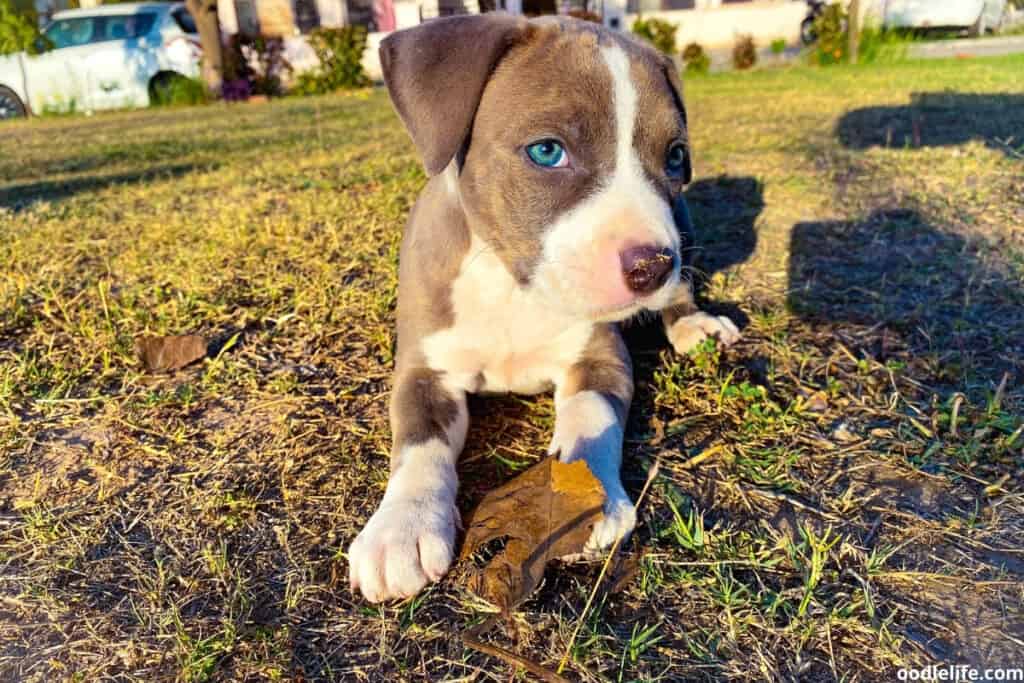
One pertinent example of genetics playing a role in blue-eyed dogs is the occurrence of heterochromia, a condition where the eyes display different colors. Found mainly in Siberian Huskies and other breeds with similar characteristics, studies have discovered a 98.6-kb duplication associated with blue eyes in these dogs. This genetic trait can be passed down to mixed breed offspring.
Amber eyes can be the side effect of breeding between blue-eyed and brown-eyed dogs, resulting in a delightful mixture of the two hues. Dalmatians, in particular, can exhibit blue or amber eyes alongside their iconic spotted coats. However, caution is advised when breeding Dalmatians with blue eyes, as there is a possible link between this trait and congenital deafness.
Other larger breeds, like Great Danes, can also possess blue eyes within their mixed breed offspring. However, as with Dalmatians, care is advised when breeding such canines, as blue-eyed dogs may not conform to breed standards or could carry undesirable genetic traits. Instead, responsible breeding practices should always be followed to maintain the health and well-being of both purebred and mixed breed dogs.
It’s always a pleasant surprise to see a mixed breed dog with enchanting blue eyes. These captivating canines, with their genetic kaleidoscope, remind us of the ongoing beauty and diversity within the dog world.
Characteristics and Temperament
Border Collies with blue eyes are known for their intelligence, athleticism, and unique eye color. As a part of the Border Collie breed, these dogs possess the same remarkable traits that make them exceptional working dogs. Let’s delve deeper into their personality and temperament.

Intelligence
Border Collies are known for their exceptional intelligence. Blue-eyed Border Collies are no exception to this. They have an innate ability to understand complex tasks and solve problems quickly.
The breed’s ability to keep a watchful “eye” on livestock is a notable trait, mentioned in the Guide to the Livestock-working Dog. Their impressive intellect has made them a popular choice for various activities, including obedience trials, agility competitions, and even dog dancing routines. Who wouldn’t want to see a blue-eyed dog bust a move?
Athleticism
When it comes to athleticism, Border Collies are natural-born athletes. Their lean bodies, agile nature, and boundless energy make them perfect for physically demanding tasks such as herding, tracking, and search-and-rescue operations. Blue-eyed Border Collies share these characteristics and excel in various dog sports, including frisbee and flyball.
If there were a Border Collie Olympics, rest assured, these blue-eyed beauties would be sprinting for gold alongside their fellow Border Collies.
In short, blue-eyed Border Collies are an extraordinary combination of intelligence, grace, and athletic ability. Their unique eye color adds an extra touch of charm to their already fascinating personalities and temperaments. Whether it’s in the field, at a dog sport competition, or simply in your backyard, these blue-eyed canines never cease to amaze with their wit, agility, and unwavering determination.
Price and Breeder Information
Border Collies with blue eyes are a unique variation of this intelligent and energetic breed. When it comes to pricing, these dogs can range from $1,000 to $4,500, depending on factors such as pedigree, coat colors, and the breeder’s reputation. It’s essential to choose a responsible breeder to ensure the health and well-being of your future pet.

Choosing a Responsible Breeder
When looking for a breeder, consider the following criteria:
- Health checks: A good breeder will have their dogs screened by a veterinarian to rule out health issues.
- Breed knowledge: They should be knowledgeable about Border Collies and be able to answer your questions about the breed.
- References: Ask for testimonials from other people who have purchased dogs from them.
- Visiting the premises: If possible, visit the breeder’s facility to get an idea of the living conditions and socialization of the dogs.
Remember, it’s essential to see the coat colors and verify the presence of blue eyes in person when possible.
In the quest for a blue-eyed Border Collie, try not to be swayed by flashy shows that might not accurately represent the living conditions of the dogs. Stick to your criteria, and consult with your veterinarian for advice on finding a reputable breeder.